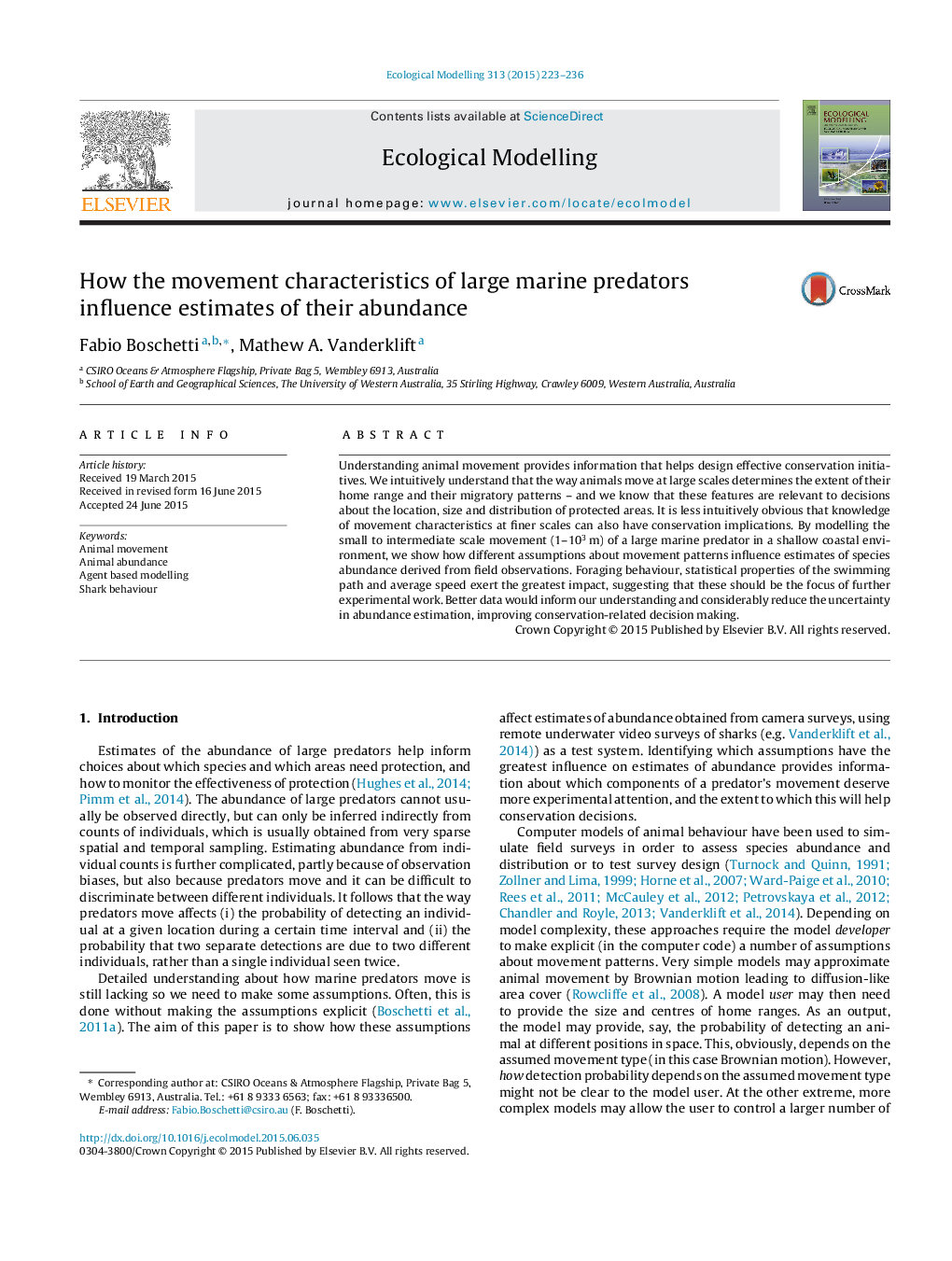| Article ID | Journal | Published Year | Pages | File Type |
|---|---|---|---|---|
| 6296615 | Ecological Modelling | 2015 | 14 Pages |
Abstract
Understanding animal movement provides information that helps design effective conservation initiatives. We intuitively understand that the way animals move at large scales determines the extent of their home range and their migratory patterns - and we know that these features are relevant to decisions about the location, size and distribution of protected areas. It is less intuitively obvious that knowledge of movement characteristics at finer scales can also have conservation implications. By modelling the small to intermediate scale movement (1-103Â m) of a large marine predator in a shallow coastal environment, we show how different assumptions about movement patterns influence estimates of species abundance derived from field observations. Foraging behaviour, statistical properties of the swimming path and average speed exert the greatest impact, suggesting that these should be the focus of further experimental work. Better data would inform our understanding and considerably reduce the uncertainty in abundance estimation, improving conservation-related decision making.
Keywords
Related Topics
Life Sciences
Agricultural and Biological Sciences
Ecology, Evolution, Behavior and Systematics
Authors
Fabio Boschetti, Mathew A. Vanderklift,
